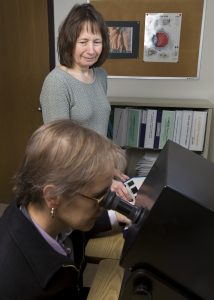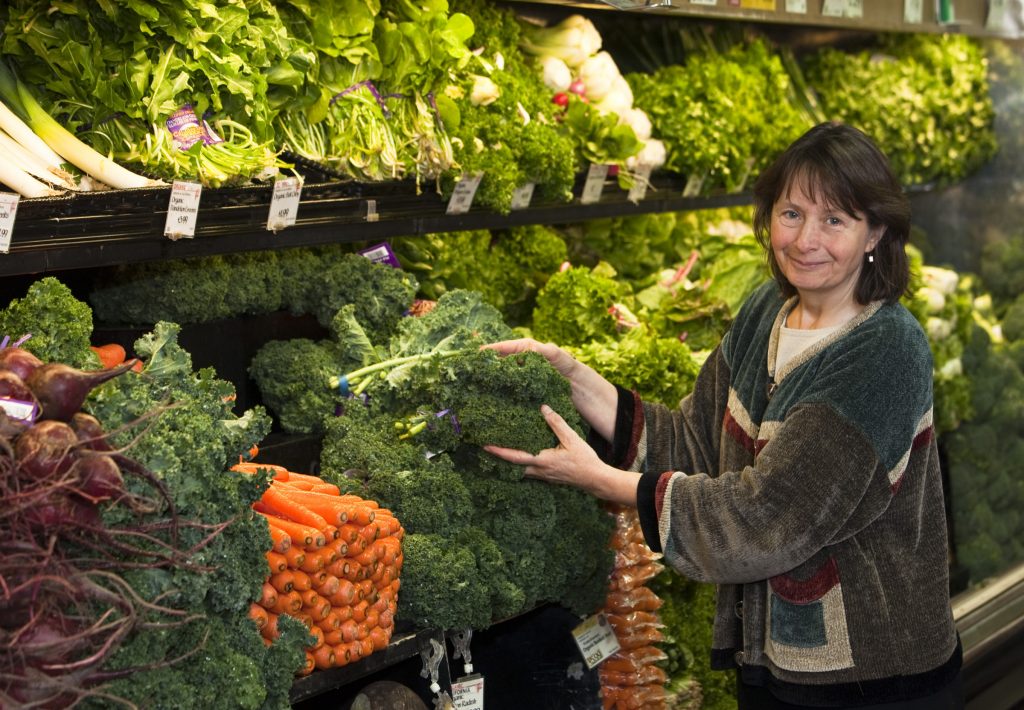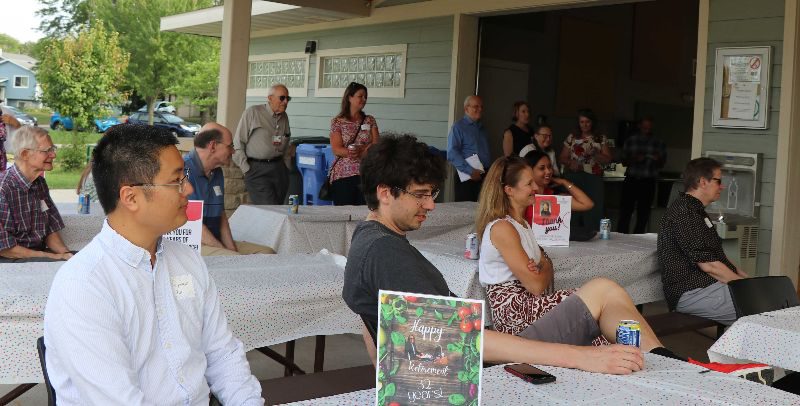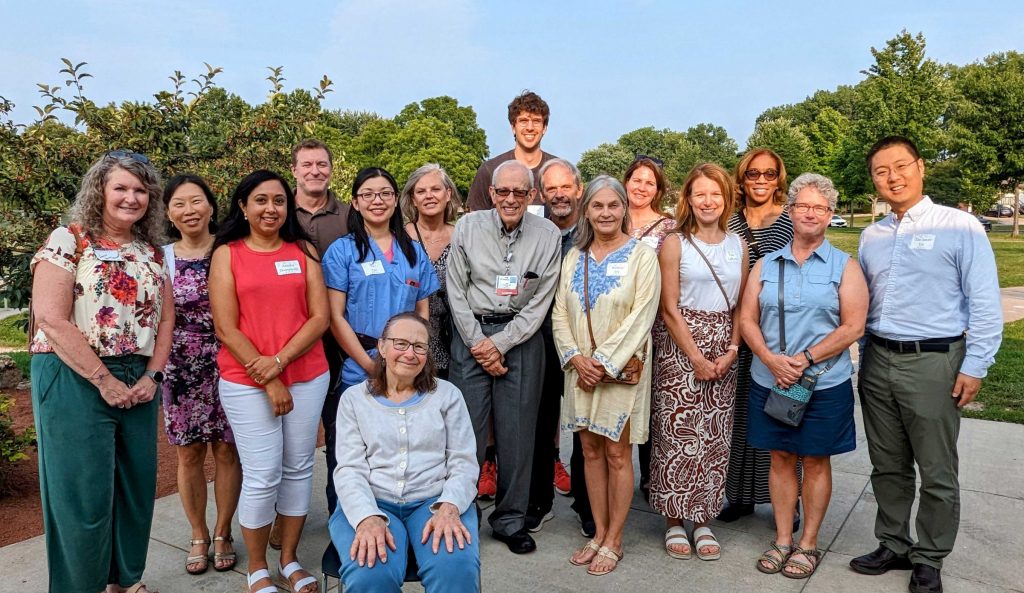As the saying goes, the eyes are the window to the soul. For Julie Mares, PhD, MSPH, they can also be a window to many parts of our physical bodies. As a nutritional epidemiologist, Mares doesn’t only concern herself with researching ways to slow disease but also looks for ways to prevent it.
 Mares, a professor in the Department of Ophthalmology and Visual Sciences, retired from UW-Madison on July 14th after a 32-year career exploring the connections between food, a healthy lifestyle, genetics, and nutrition in preserving eye health. She has, undoubtedly, been one of the most influential researchers in the field. Her body of work encompasses more than 200 peer-reviewed publications, book chapters, and abstracts, as well as 100 invited presentations.
Mares, a professor in the Department of Ophthalmology and Visual Sciences, retired from UW-Madison on July 14th after a 32-year career exploring the connections between food, a healthy lifestyle, genetics, and nutrition in preserving eye health. She has, undoubtedly, been one of the most influential researchers in the field. Her body of work encompasses more than 200 peer-reviewed publications, book chapters, and abstracts, as well as 100 invited presentations.
“In my lab, we look for the relationships between nutrients in the diet and blood to the onset and progression of eye diseases common in old age: cataract, macular degeneration, and diabetic retinopathy,” Mares said. “We also collect extensive information about foods eaten, pills taken and other related aspects of lifestyle such as physical activity, which can influence the way nutrients in food are utilized by the body.”
Mares’ interest in food and healthy living started at an early age. “In the 1960s, packaged, processed food which could be enjoyed with little or no preparation (and were high in salt and sugar) took increasing space in grocery store aisles, which was appealing to busy moms. Things like instant oatmeal and Oreo cookies were welcome luxuries in our house,” she said. “Then fast-food restaurants like McDonalds popped up, so we could enjoy quick meals without even cooking. We forgot how to nourish ourselves from our gardens and farms.”
After completing a Bachelor of Science in Foods and Nutrition from the University of Illinois Urbana-Champaign and a Master of Science in Public Health from the University of Illinois School of Public Health, Mares earned her Doctorate in Nutritional Sciences from the University of Wisconsin-Madison in 1987. Soon after she joined the research group of Drs. Ronald and Barbara Klein, faculty in the Department of Ophthalmology and Visual Sciences. This department has been her home ever since.
The Kleins initiated the landmark Beaver Dam Eye Study of 5,000 participants 43 years of age and older from the city of Beaver Dam, Wisconsin. The longitudinal study followed these residents of the Wisconsin community, to explore risk factors related to the prevalence of eye diseases in the aging population. The Kleins also worked with Dr. Matthew Davis, Medical Director of the Wisconsin Reading Center and later, Dr. Barbara Blodi, in advising the development of methods for grading characteristics of the retina and lens for national studies such as the “First and Second Age-Related Eye Disease Studies” (AREDS1 and AREDS2), and investigating the effects of vitamin and mineral supplements on macular degeneration and cataract. Mares cites the famous Beaver Dam Eye Study and the AREDS Studies, along with those department faculty, with influencing her research path.
“I loved the pictures of the retina undergoing processes of aging, and the body’s attempt to repair itself—such as the development of new blood vessels—which I learned about earlier in relation to cancer in my doctoral studies,” Mares said. “I realized then that the eye is not only a window to the soul, as the saying goes, but also a window to the physical body. There are so many processes—normal conditions and diseases—in our body that we can learn about from our eyes.”
Among its many findings, the Beaver Dam study revealed that individuals with higher intakes of foods containing lutein—a yellow pigment found in plants—had lower odds of developing cataracts and age-related macular degeneration. Dr. Mares wanted to understand why.
In 2001, Mares spearheaded the landmark Carotenoids in Age-Related Eye Disease Study. Known as CAREDS, the project was the first long-term examination of carotenoid plant pigments and vision. Mares, and Co-Principal Investigator, Barbara Blodi, and their team of researchers began following more than 2,000 women, studying the impact of genetics, vitamin D status, physical activity, and nutrient-rich diet patterns in relation to eye health over multiple years.
This research revealed that lutein—and other carotenoids like zeaxanthin—positively impacted blood vessel health. She utilizes a non-invasive flicker photometry test first introduced by collaborator, Dr. D. Max Snodderly, a Professor Emeritus in the Department of Neuroscience at the University of Texas, Austin.
“This test evaluates levels of carotenoid plant pigments that accumulate in the eye—especially in the center (macula) of the retina at the back of the eye, referred to as “macular pigment,” Mares said. “We are currently investigating whether macular pigment density levels predict lower risk for age-related macular degeneration, vision loss and aging of the retina.”
This research revealed that it wasn’t simply a matter of how much lutein a person eats that determines how much of it gets to their eyes. Rather, there are other factors—like genetics and exercise—that play a role in creating the circumstances required to accumulate macular pigment, and prevent age-related macular degeneration (AMD) damage as we age. It was discovered, for example, that women over age 60 who are physically active, have never smoked and follow a healthy diet that includes lutein, are three times less likely to have AMD.
“My advice is to focus on a healthy diet and lifestyle more than any one particular nutrient,” Mares said. “Many of us tend to rely on vitamin pills. For example, we might not eat an orange because we think we are getting the vitamin C we need by taking Vitamin C tablets. But it’s not that simple. We benefit from eating foods, which provide many other bioactive plant chemicals, in addition to vitamins and minerals. Commercial vitamin products do not often contain beneficial plant chemicals which we are still learning about.”
More than two decades later, Mares’ work on the project continues. She is currently partnering with Barbara Blodi, and with Amitha Domalpally, MD, PhD the research director of the department’s Wisconsin Reading Center, to utilize new imaging technology to further her findings. Dr. Yau Liu, MD, MS in the department is also extending this research of carotenoids in the retina to their potential role in protecting against the development of glaucoma.
“We can see many more details in the back of the eye than we could when I first began working in eye research,” Mares said. “Advances in imaging are enhancing what we can learn about the role of nutrients in eye health. For example, we can now measure individual layers and the diameter of blood vessels in many different regions of the retina.”
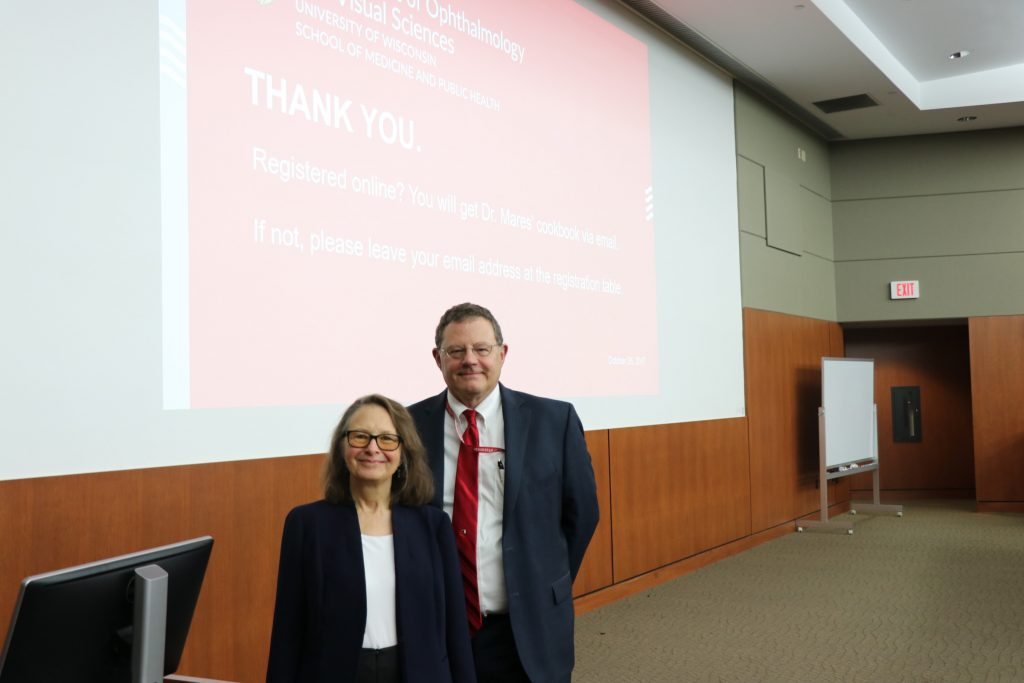
Looking back on her life’s work, Mares acknowledges the instrumental role her grandparents played. Her grandmother—from Czechoslovakia—and her grandfather—from Greece—were both amazing cooks. But they died too early in her life.
“When we yearn for something or someone, it becomes larger than life,” Mares said. “The way I connected with my grandparents was through studying (and cooking and eating) food. It has been a glorious adventure.”
*****
Colleagues and friends celebrated Dr. Mares at a retirement party August 9, 2023.

